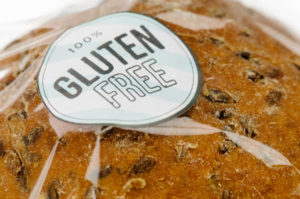Introduction
The importance of proper labeling is unparalleled since it can save an individual from a monetary penalty of up to $750,000.00 and it could save a corporation from paying $10,000,000.00. Several specific details must be reviewed on your product’s packaging to safely avoid these consequences, one of those specifics is the “gluten-free” claim. This article will clear your path through the journey which is the legalities of the “gluten-free” claim, by properly defining the term, set up appropriate boundaries for your claims, and clarifying any other uncertainties.
What does “gluten-free” mean?
The Meriam-Webster dictionary defines gluten as “a tenacious elastic protein substance especially of wheat flour”, so if you want to follow the simplest of definitions “gluten-free” would mean a product in which there is no trace of gluten.

However, according to the health and safety intent of B.24.018, Health Canada states that any product with levels of gluten below 20 ppm\20mg/L. These small traces are non-harmful to those who cannot tolerate gluten, and they should only be found in your product due to cross-contamination, it is not an excuse to use minute amounts of gluten in your products, the only time you should find gluten in your product is if there was a case of cross-contamination in your manufacturing facility. If you deem it necessary to add tiny amounts of gluten it needs to be stated on the packaging via the list of ingredients or a “Contains” section. Hence, in Canada gluten-free products simply carry levels of gluten below 20ppm.
Do you have to get certified?
The short answer is yes you should be certified to claim your product is “gluten-free”. To have your product certified you must go through thorough testing with either the government or a third-party business. Once you are certified you must pass a minimum of an annual test where the third-party company or the government can review ingredients used, inspect the manufacturing plant, and retest the product itself. This said it is not required by law to be certified to promote the lack of gluten in your product. Even without the certification, you will follow the same protocols and laws as a certified vendor. But the certification gives a sense of credibility and comfort to consumers, so there is really no harm in getting certified.
When are you allowed to claim your product is “gluten-free”?

Technically, you can claim that your product is “gluten-free” before doing anything else. But with your newfound knowledge, you understand the definition of the term as well as the importance of certification, we encourage that you only start claiming the product is “gluten-free” after being certified, to have evidence backing the claims of whatever you are selling. If for whatever reason your product is found to have minute levels of gluten you should put a disclaimer following Canadian laws to promote honesty with your customers.
Conclusion
To conclude, if you aren’t lying to your consumers about the amounts of gluten in your product you will not be breaking any laws. Simply remember the following information which has been viewed previously in this article in order to properly advertise and sell your “gluten-free” product. It is also important to note if your product has 20 ppm or less of gluten your claim will remain legitimate. Certification may not be a necessity, but it will solidify your claims and create a sense of trust within your customers. Once, again legally speaking if there is no gluten in your products you can claim it is “gluten-free”, this said using the results of the certification testing only benefits your company.
